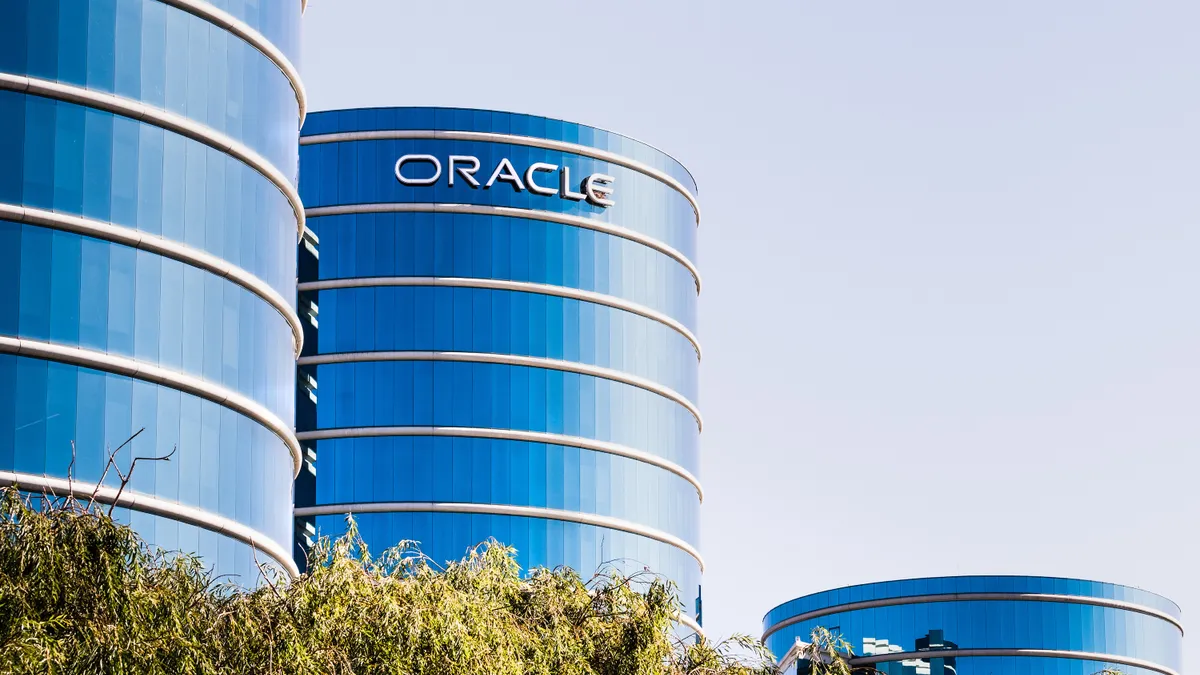The second year of a pandemic may be challenging for everyone – but it's not all bad for those in the compensation and benefits field, sources who spoke to HR Dive insist.
With worker attrition at historic highs, pay has become the centerpiece of the recruiting conversation; 68% of HR leaders in a recent Grant Thorton report said they increased the number of employees eligible to receive a cash bonus in 2021. Large organizations — particularly those employing large numbers of frontline workers — have expanded non-salary employee benefits offerings in lockstep with their competitors.
"It's a great time to be a total rewards professional," said David Giesman, vice president of global total rewards at fashion retailer Designer Brands, Inc. "Your entire playbook is open to consider doing things differently. It's an opportunity to be creative."
Whether the currents of late 2021 continue for much longer, the focus in some ways remains the same for those in charge of benefits. HR teams still will need to provide offerings that meet workers' personalized needs and integrate those offerings directly into overall talent strategy.
The Great Resignation's reign
It has not been easy for employers to find skilled talent, and in some ways, it may be even harder to keep existing talent.
The U.S. workforce recorded a quit rate of 3% in November 2021, tying September's record for a series high dating back to December 2000, according to U.S. Bureau of Labor Statistics data. The agency found attrition to be particularly high in the accommodation and food services; healthcare and social assistance; and transportation, warehousing and utilities sectors.
Labor market pressures should continue for these types of frontline workforces, said Lauren Mason, principal and senior consultant for the career business of HR consulting firm Mercer. The ongoing surge of the omicron variant indicates that the situation is likely to worsen, she continued.
That has caused employers to up their compensation budgets, but many increases have still been tight, Mason said, compared to the labor market. One priority for compensation professionals is to ensure investments are targeted to positions where the organization is seeing the greatest pressure and turnover, she added. That translates to higher hourly pay for frontline workers as well as larger bonuses for professional and salaried workers going into this year.
Increasing wages, moreover, will not satisfy everyone. "When you look at total rewards and you look at the elements that have the biggest impact on recruiting [...] it becomes a different list of things that are the most tangible and in-the-pocket for people," said Giesman, noting that time off and similar perks can be a particular draw for new talent. "For retention, those things may be at the bottom of the list."
Giesman said Designer Brands Inc. has instead sought to appeal to current employees by increasing eligibility for bonuses and experimenting with other perks, such as paying for one year of employees' health insurance premiums after they log one year of service. HR teams should hold managers accountable in this area by, for example, ensuring that people have opportunities for self-development on the job, including earning a promotion.
"We do talent reviews so that management and above is focused on assessing that potential," Giesman said. "It's so much easier to promote."
Keeping an eye on deferred care
Toward the end of 2020, observers identified deferred care as a potentially problematic trend. With care centers closed or otherwise hampered by COVID-19, workers went without some forms of preventive and elective healthcare, particularly during the pandemic's early months.
This is still true in 2022. Mercer's recent national survey of employer-sponsored health plans noted a larger-than-normal increase in health costs of 6.3% during 2021, and deferred care is likely to be the largest driver of increasing costs, said Kate Brown, leader of the firm's Center for Health Innovation.
Delaying preventative care can lead to higher treatment costs down the road in the event that diseases are not detected early on, Brown said, although other factors may also contribute to rising costs overall. She added employers are "cautiously optimistic," projecting healthcare cost increases that are more in line with average years.
As with talent availability, however, the omicron variant — and other potential variants — present their own level of uncertainty, Brown said.
Hearts at home
Video chats interrupted by children home from school. Caregiving duties increasingly intertwined in employees' daily workflows. Scenarios such as these have spurred employee benefits professionals to seek ways to support employees as they, in turn, support their loved ones.
Giesman highlighted a few of Designer Brands' efforts in this area. The company introduced a free employee subscription to Sitter City, a service that allows workers to find coverage for child care as well as elder care and pet care. "We quickly put that into place in 2020, paid for it and made it free to employees," Giesman said.
At the same time the company engaged its affinity groups to focus on important topics such as diversity, equity, inclusion and sustainability while also seeking to make certain benefits options more inclusive. For example, Designer Brands' changed its bereavement policy, which had once limited employees to taking off time for "immediate family members," to encompass a broader group of relationships.
Mason said employers may need to determine whether they should make other structural changes to existing benefits programs in order to stay ahead of pandemic-driven disruption. Changing guidelines from the Centers for Disease Control and Prevention might be a reason to reassess how the organization structures its paid leave program, for example. And if employees have dependents such as children who get sick and need to quarantine, that may call for additional scheduling flexibility.
Different occupation groups may have separate benefits preferences, Giesman noted. Corporate workers at Designer Brands, he said, tend to value remote work highly, whereas those working in stores and distribution centers placed a premium on time off, scheduling consistency and getting desired hours.
Mental health's continued evolution
What had long been a popular topic for HR professionals became an urgent discussion amid the pandemic. Research continues to find evidence that employee benefits programs prioritized mental health in the past year. One recent poll of 151 business leaders by consulting firm West Monroe Partners found 44% of respondents said their companies were addressing mental health, but could be doing more.
The report's findings are indicative of the fast evolution mental health has experienced in the workplace context over the last couple of years, according to Eric Freshour, director at West Monroe Partners. But among the report's findings, "the biggest thing I saw was really the variety in what people are offering," he said in an interview.
Popular strategies cited by respondents included additional time off and personal days; flexible schedules; engagement and well-being surveys; and employee assistance programs and employee resource groups. But leaders in the survey also pointed to solutions that could help moving forward, such as technology that could help reduce workloads and fill staffing gaps, or scheduling "no meeting" days and company-wide mental health days, among others.
Smaller gestures, such as discouraging staff from sending emails after hours and instead encouraging them to prioritize scheduling work time and personal time in such a way that they can accomplish day-to-day tasks, whether work-related or not, can also have an impact, Mason said.
Freshour said he is skeptical about the ability of organizations to maintain their mental health programs and initiatives moving forward, as some of these efforts were created in response to the stressors caused by the pandemic. "My hope, though, is that what was borne out of necessity is now generally becoming part of the fabric of the organization," he continued.
Questions about momentum remain
Similarly, Freshour added that though it may seem challenging to continue making investments in well-being over the long term, such strategies are not necessarily high cost drivers. Even for something as simple as giving an employee an extra day off or providing access to a wellness session, "there a lot there in terms of the ROI of investing in that," he said. "There are other factors or benefits that can be considered that aren't quite additional in terms of cost."
Organizations are also getting smarter about how they elicit employee feedback on benefits, Freshour continued, and he recommended that employers use focus groups and surveys. "What I've always explained is that people really, truly do want to have their voice and opinions heard. You just have to demonstrate that you're taking those mechanisms and putting them into action."
Total rewards professionals have the opportunity to help employers meet the challenges of the Great Resignation, but in order to do so, they will need to stay attuned to well-being metrics, Mason said; "Monitor those issues around what's happening and propose investments right now while the market is strong on those particular issues."
Even if the winds in the labor market do shift, employee benefits professionals can work to demonstrate how their efforts impact productivity, quality and other business metrics, Freshour said. "This might be one of the logical things on the chopping block for some, but I think it's kind of important to broaden the perspective on ROI around these types of things."






















